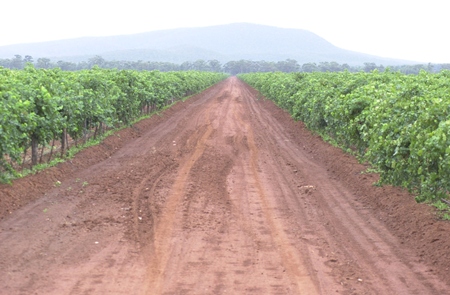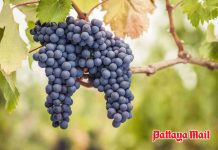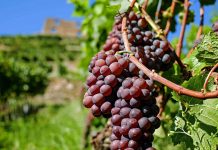Warburn Estate is one of Australia’s most important wine producers, with more than 1,000 hectares of vines and tank storage for 35 million litres. The company had modest beginnings in the 1950s, but now makes a huge range of wines, many of them aimed at the mass market. Warburn Estate is owned by the Sergi family, whose winemaking traditions were bought to Australia when Giuseppe and Maria Sergi migrated from Europe with their young family in 1952.
Although Warburn Estate produces some fine wines, notably their “1164 Family Reserve”, the company’s newest range is named after the Aspen tree, the leaves of which evidently quiver ceaselessly, earning them the nickname of “chattering tongues”. There are eight varietals in the Aspen range, “designed to enliven every social occasion” as the publicity has it. They are quite commercial in style and presumably aimed at the mass market. And to my mind, there’s nothing much wrong in that. Some of these wines could well encourage more people to enjoy wine with their food and make wine part of their everyday lives.
 Part of the Warburn Estate vineyard.
Part of the Warburn Estate vineyard.
They tend to be predominantly fruit-forward (to use the current jargon) with soft tannins. Most of all, they’re easy on the palate and ideal for social occasions. For people who are not normally wine-drinkers, wines like this would make a splendid introduction.
Aspen Estate Pinot Grigio 2011 (white), Australia (Villa, Bt. 492)
Yes, it really is from 2011, so this is a very young wine indeed. In Italy, the Pinot Grigio (PEE-noh-GREE-joh) grape produces simple but attractive wines. The usual criticism is that Italian Pinot Grigios tend to be a bit bland. They don’t really have much to say, but are not very demanding either. Come to think of it, I know some people like that.
In Alsace, where the grape is known as the Pinot Gris, it makes fine, powerful wines that have become legendary. The grape first appeared in Australia as far back as 1832 and it’s also making quite a name for itself in New Zealand.
This wine was matured in stainless steel tanks, to preserve the freshness. It’s a very pale straw-gold, with a delicate floral and attractive mineral aroma of apples, citrus and sweet fruit in the background. It’s light, lemony, dry and refreshing on the palate. You get plenty of green apples up-front too, with a background of peach, melon and pear as well as an appealing tingly acidity on the tongue. It’s a pleasingly lively wine and at only 11% alcohol, it would make a refreshing apéritif to serve before dinner.
It has a crisp dryness and a long, zesty apple-flavoured finish, so it could well appeal if you prefer delicately flavoured, easy-to-drink white wines. Seafood and fish would seem to be obvious partners, though it could probably go well with mildly spicy Thai food. The makers suggest drinking it with garlic prawns or smoked chicken salad. In any case, serve it as cold as you dare.
Aspen Estate Cabernet Merlot 2010 (red), Australia (Best, Bt. 460)
This is a much more interesting wine. The combination of Cabernet Sauvignon and Merlot (mehr-LOH) is a classic blend which probably originated in Bordeaux, where the rather assertive and tannic Cabernet (ka-behr-NAY) grapes are invariably blended with the much softer Merlot (among other things) to create a smoother wine.
This ruby-red wine looks inviting. The fruity and quite complex aroma is not slow to emerge either. It’s loaded with blueberries and cherries with a dash of eucalyptus, dill and grassy freshness. The palate is very soft, with blackcurrants and blackberries and perhaps a hint of lemon. There’s a fresh and dry finish, probably because the wine was matured in stainless steel tanks. The supple tannins make this a really attractive easy-drinker.
This wine is very much in the modern Australian style; smooth and elegant. The makers suggest that it would go well with red meat dishes. It could transport a humble hamburger to new gustatory heights, but I’d be quite happy to enjoy this wine on its own.




